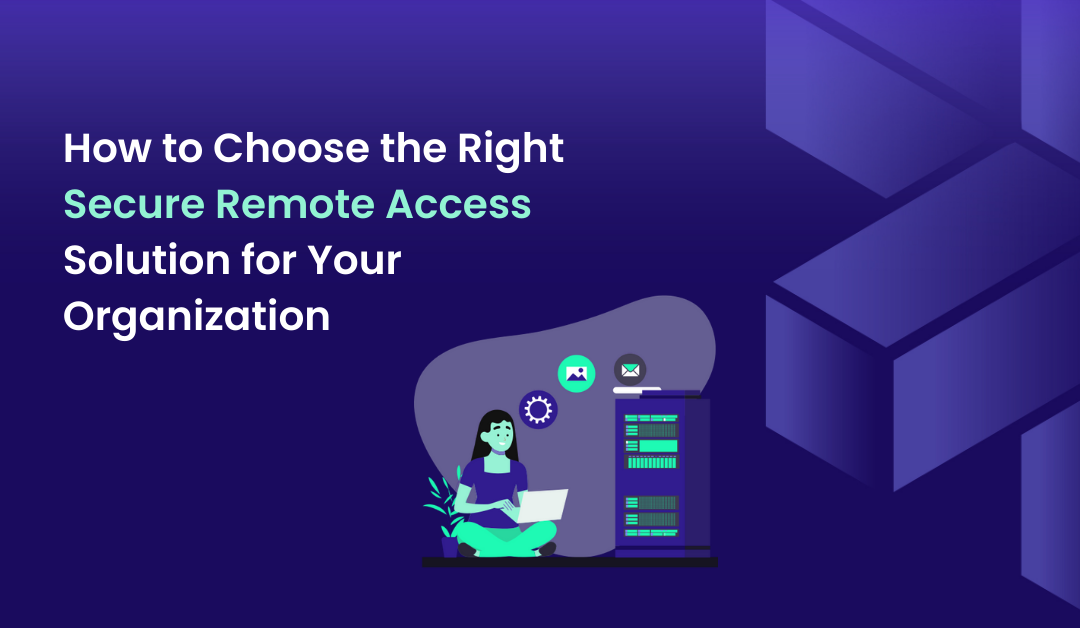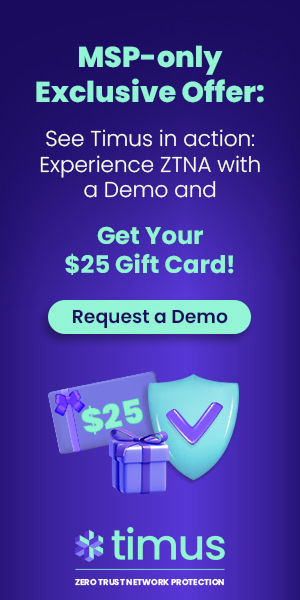How to Choose the Right Secure Remote Access Solution for Your Organization
The significance of secure remote access to business resources has increased as our linked world continues to develop. For both employees and devices alike, establishing a secure remote connection from any location transcends convenience; it is an essential necessity. As organizations pursue enhanced flexibility and productivity, the task of selecting the ideal secure remote access solution takes on primary importance. In […]
Author
Date
Category
All Categories
- AI-powered security
- Attacks & Threats
- Cybersecurity
- Hybrid Cloud
- Network
- Network Firewall
- Network Protection
- News
- Remote Workforce
- Security
- Zero Trust
Contents
Popular Posts
Product
Join the Newsletter

The significance of secure remote access to business resources has increased as our linked world continues to develop. For both employees and devices alike, establishing a secure remote connection from any location transcends convenience; it is an essential necessity. As organizations pursue enhanced flexibility and productivity, the task of selecting the ideal secure remote access solution takes on primary importance. In this in-depth text, we accompany you on the most robust, secure remote access software for your organization.
Assessing Your Remote Access Needs
Before delving into the world of remote access needs, conducting an access assessment is important to realizing your organization’s specific requirements.
- Understanding your remote work landscape and evaluating the extent of remote work requirements in your organization is essential. Are employees primarily working from home, while traveling, or from various branch offices?
- Assessing workforce mobility within your organization, where employees use various devices like laptops, smartphones, and tablets, is crucial to guaranteeing a smooth experience across different platforms.
- Evaluating connectivity demands involves assessing the bandwidth and connectivity requirements. This assessment is critical when dealing with high-definition video conferencing, large file transfers, and real-time collaboration tools, as they may necessitate stronger network resources.
- Conducting a remote access analysis requires evaluating your primary use of web-based applications. Additionally, consider the necessity for access to on-premises servers and legacy systems.
- Understanding your business needs is crucial while aiming to enhance productivity, reduce costs, or strengthen security. Identifying your primary objectives will help shape your remote access strategy.
Types of Secure Remote Access Solutions
Once you have a clear understanding of your remote access requirements, it is time to explore the specific secure remote access solution that you need.
- VPNs have traditionally been a crucial component of remote access. Between the user and the corporate network, they create a secure tunnel. While traditional VPNs offer a secure connection, they can be complex to manage and may not provide the level of scalability required for modern organizations. They are usually clunky, their credentials are easy to steal, and if a hacker gets access to the network via a traditional VPN connection, they can freely move across the network in a lateral way. Modern remote access methods include Zero Trust Network Access (ZTNA). It emphasizes a ‘Never trust, always verify’ philosophy, ensuring that the identity of the user is verified not only via their credentials or device but also through the context of the request for connection. ZTNA solutions offer granular control and also allow for segmented access. They are well-suited for organizations prioritizing security.
- When users’ needs require complete access to a remote system, Remote Desktop Protocol (RDP) works well. Users can connect to a remote desktop or server using RDP; however, they may need extra security precautions to guard against attackers.
- SSL/TLS provides secure communication over the internet. While commonly used for securing web traffic, they can also be employed for secure remote access.
- Cloud-based access solutions leverage the power of the cloud to provide secure access to applications and data. It provides scalability and flexibility to businesses that adopt the cloud.
- The choice of authentication method plays a significant role in security. Consider the several authentication methods available, including specific credentials such as login information, passcodes, and multi-factor authentication (MFA).
Security Considerations: Protecting Data and Users
When it comes to secure remote working, considerations for security are essential. Building a trustworthy and secure remote access environment requires protecting user access and data.
- It is essential to prioritize data security by ensuring that data transmitted and stored during remote access is adequately protected. Since encryption shields data during transmission and storage, it should be a standard practice to prevent data breaches and eavesdropping.
- Implementing user authentication provides safety through multi-factor authentication (MFA). Access is restricted to only authorized users, thanks to adaptive MFA.
- Evaluate the security protocols used by the remote access solution. Adaptive MFA takes security a step further by dynamically adjusting authentication requirements based on user behavior, enhancing protection.
- Consider solutions that offer threat prevention capabilities, including intrusion systems (IPS) and behavior-based anomaly detection. This technique focuses on identifying deviations from established baseline behaviors rather than relying on predefined rules. The Timus platform employs behavior analysis to detect previously unseen attacks and sophisticated threats.
These considerations collectively ensure that your remote access solution provides comprehensive protection for your valuable data and the users accessing it, thereby fostering secure remote working environments.
Choosing the Right Secure Remote Access Solution
Now that you have carefully considered your needs, including the option of Secure Remote Access software, it is time to make the most appropriate decision. Several decision factors should influence your decision while choosing the right remote access solution for your organization.
- Firstly, cost-effectiveness plays a pivotal role in comparing the total cost of ownership. To make sure it fits within your budget, we advise you to compare the overall expenses associated with ownership, which include licenses and operational costs.
- A thorough vendor comparison is necessary. Research and scrutinize potential vendors, examining their track record, level of support, and reputation within the industry.
- Ensuring compliance with industry regulations and requirements is another key consideration to avoid legal issues. Prioritizing a positive user experience is crucial; the chosen solution should guarantee seamless, user-friendly remote access.
- Assessing the implementation process and how well the solution integrates with your existing infrastructure plays a big role in minimizing disruption during deployment.
- Ultimately, the best fit for your organization should be determined by considering all these factors, ensuring that your chosen secure remote access solution not only meets your current needs but also prepares you for future growth and security challenges.
Navigating the world of remote access solutions can be daunting, but with the right approach, you can select the perfect fit for your organization’s security and productivity needs. Secure remote access is not just about connecting people and devices; it is about enabling your organization to thrive in an increasingly interconnected and dynamic world. At Timus, we are determined to revolutionize secure remote access. We support moving beyond traditional VPNs and embracing the robust security of a zero trust network security solution.
Our Timus Solution exemplifies our dedication to innovation and security. It operates on the principle of ‘Verify Everyone,’ ensuring rigorous verification of all access requests to maintain secure connections.
Timus is about more than just secure remote access. It is about transforming it with our advanced zero trust network security solution. Ready for the future of secure connectivity? Explore the limitless potential with Timus.
Get Started with Timus
Zero Trust. Adaptive Cloud Firewall. Secure Remote Access. In one.
